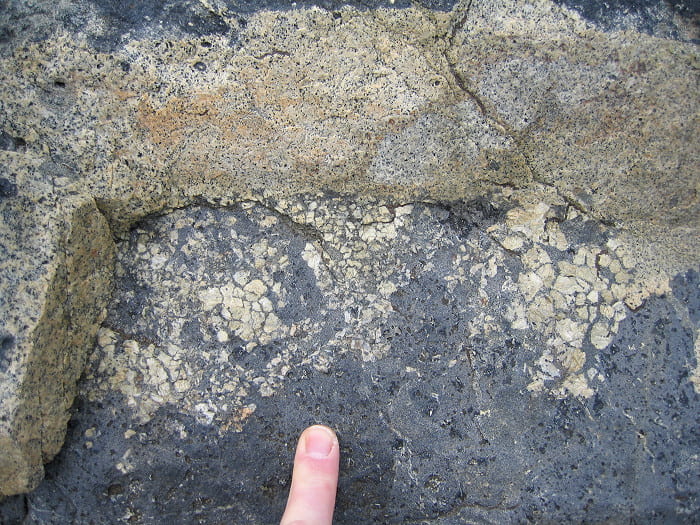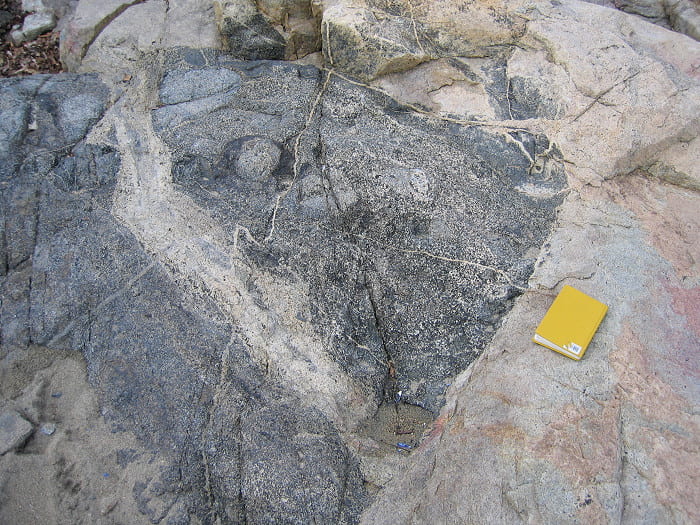Stop 4: More Beverly Syenite
This is another outcrop of Beverly Syenite. It has only a few pillow-like mafic blobs, and a variety of other igneous features representing older, more modified, and younger, less modified mafic-felsic magma interactions.

This is some more Beverly Syenite. Again, it is made mostly of perthite with very little quartz and only 5-10% mafic minerals. This high concentration of perthite may represent some kind of cumulate.

This is a syenite pegmatite cutting the fine-grained host syenite. Note the coarsening-inward texture.

A relatively fresh, undeformed mafic dike cutting the syenite. This dike was emplaced after the surrounding rock was solid, if not completely cold.

Lobate margin to a mafic pillow, or possibly an illusion of lobateness caused by fractures penetrating a then-soft mafic block that were filled by medium-gray dioritic rock. Notice the layering in the mafic rock that is cut by the diorite-filled fractures. The white material to the right is a quartz vein.

This is the margin of a pillow that fractured almost exactly along its interface with syenite. Notice that the perthite crystals are particularly large at the interface. I suspect this was caused by local melting of the syenite, followed by subsequent growth of alkali feldspar from a few unmelted residual crystals.

This is an inhomogeneous mafic block, probably produced by incomplete magma mixing, with an inhomogeneous, crudely layered, relatively felsic dike. The mafic rock and dike were later broken away and incorporated as a composite block in the host syenite.

Here is syenite with two rather undistinguished mafic xenoliths. Were they simple blocks broken from the magma chamber walls? Are they parts of dismembered dikes? Or could they be the modified remains of mafic pillows?
